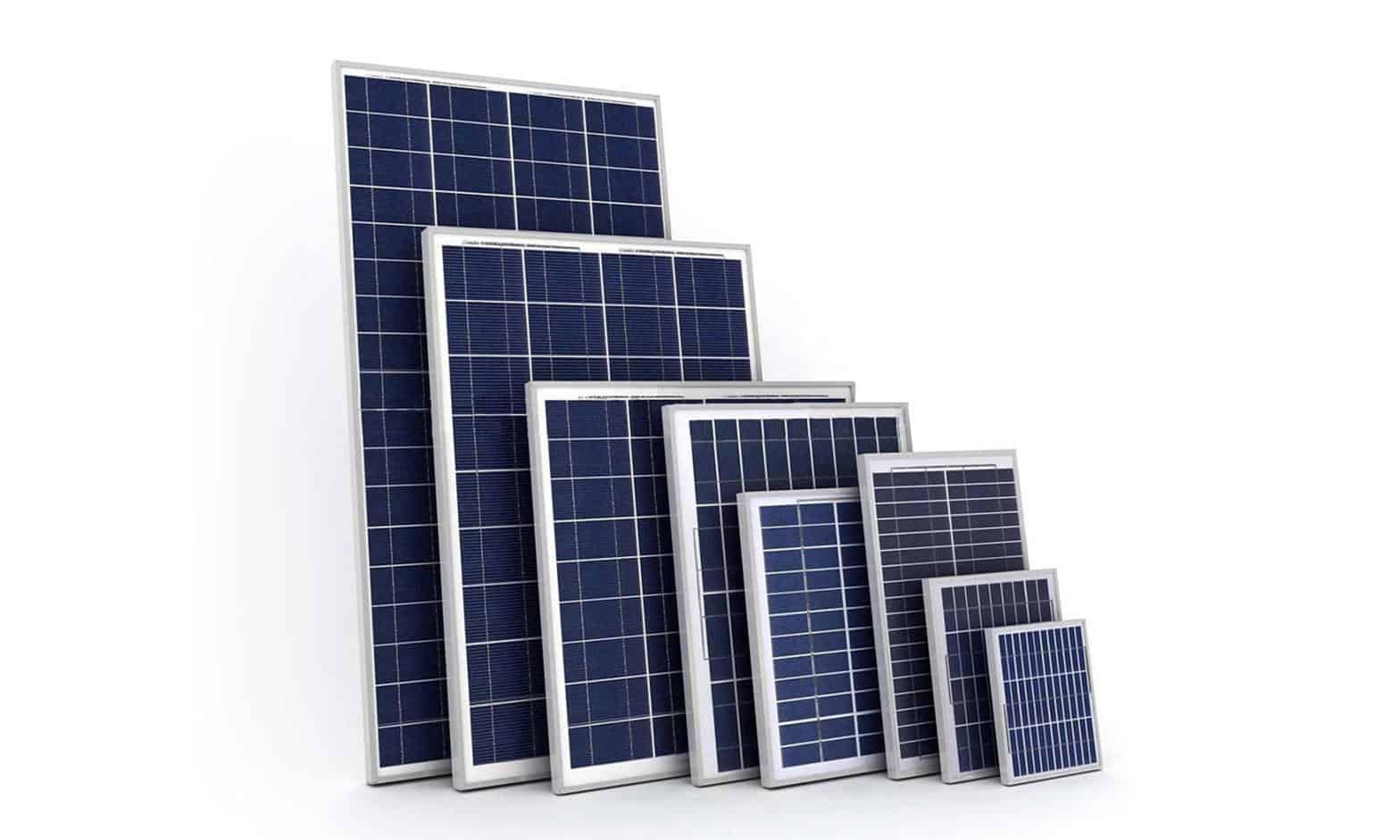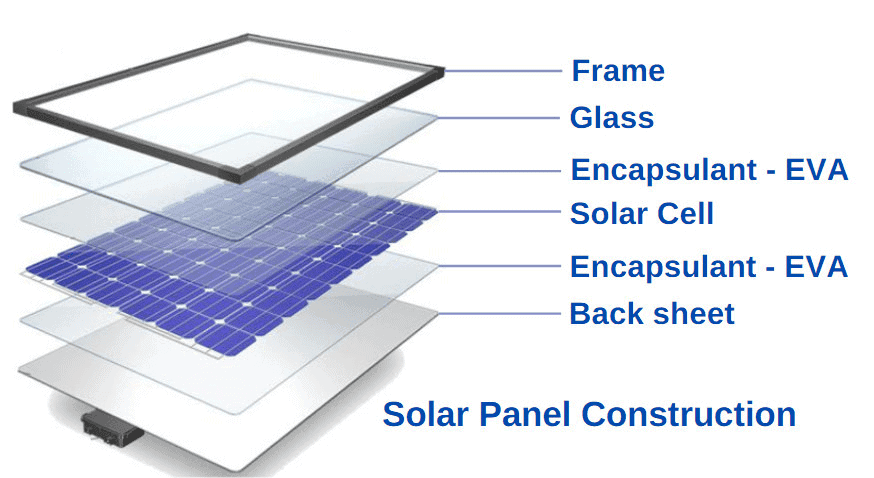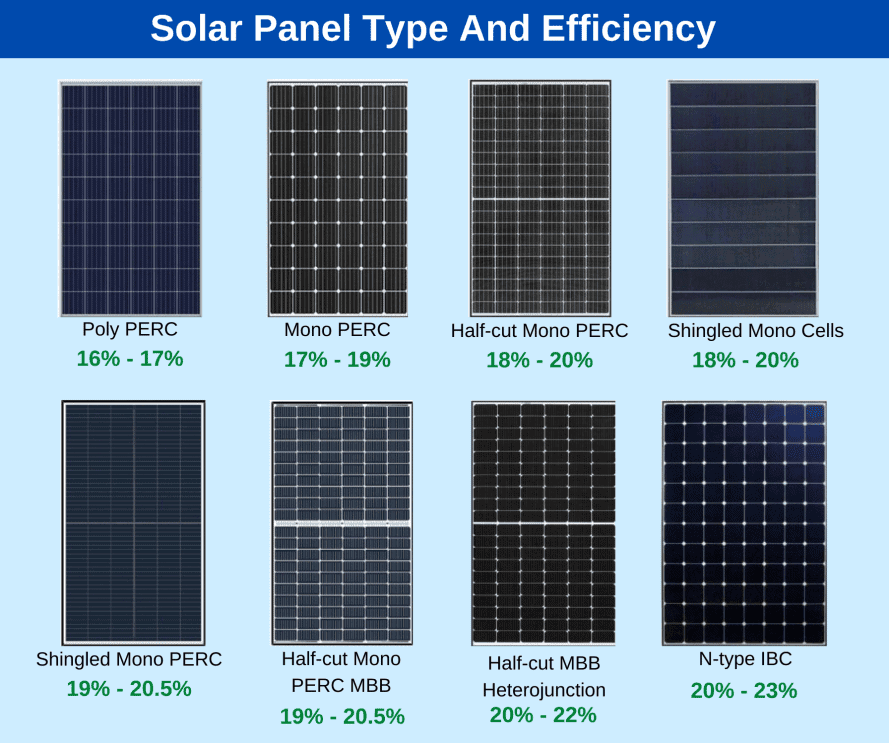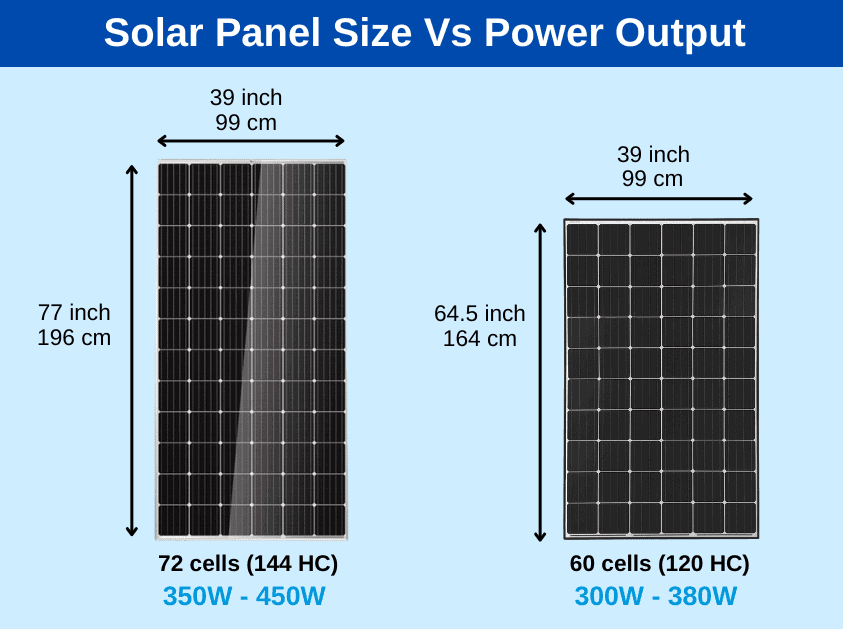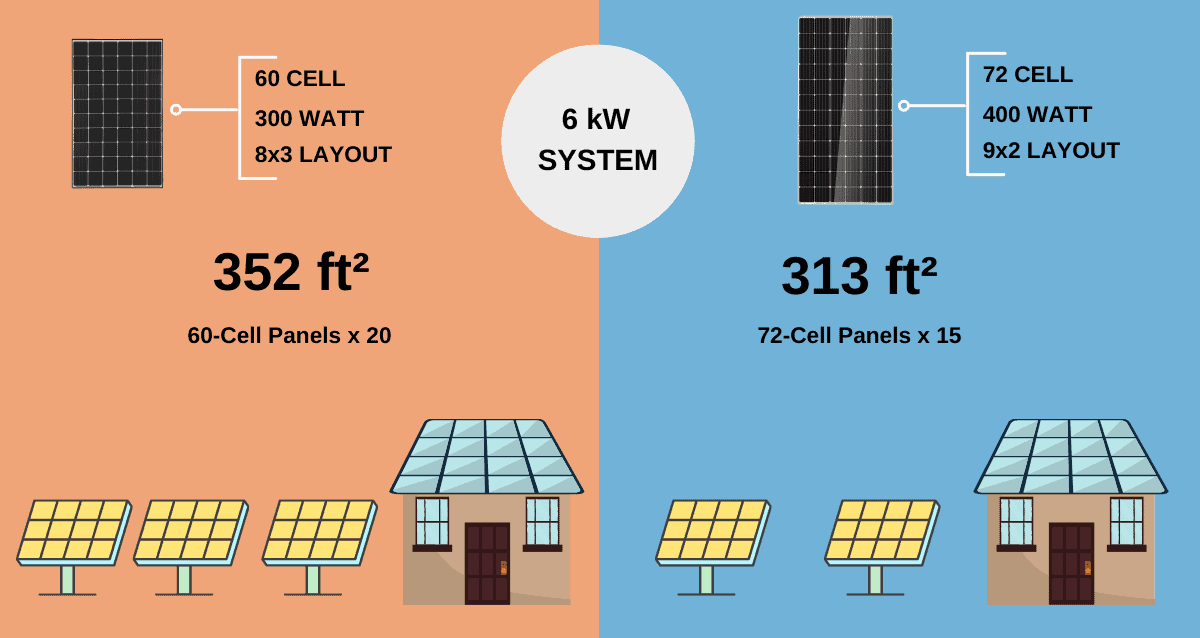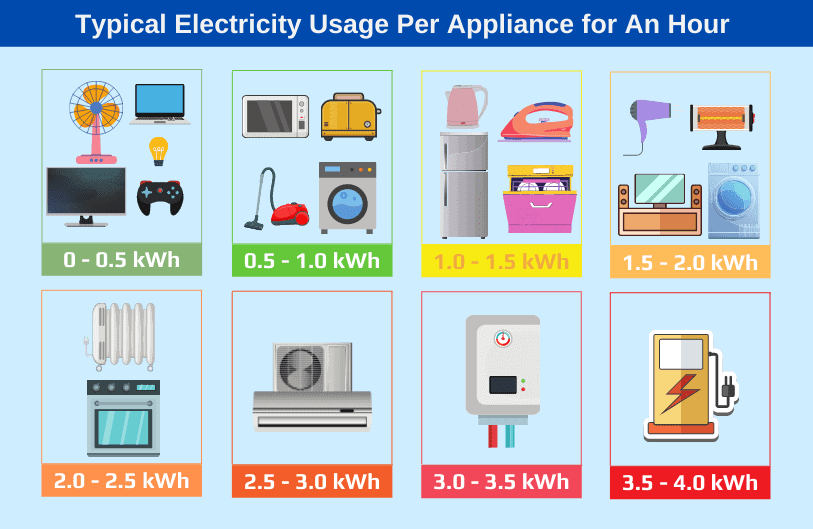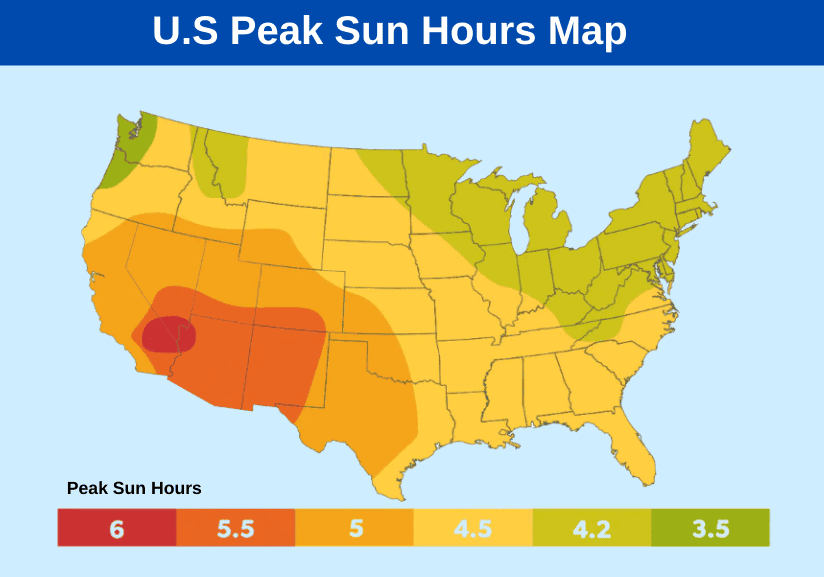So, just how big are solar panels? It’s a question I’ve been asking since I’m thinking of installing a solar system on my roof. I only have so much space, though, and I want to make sure I have room for a solar system that can generate enough electricity to make it a worthwhile investment.
Perhaps you’ve decided it’s time to install a solar system too? In the last few years, solar panel efficiency has improved, and costs have come down enough to make it all viable, especially with some great government incentives available.
I’ve done lots of research into solar panel size, efficiency, and just how much power they produce. Here’s what I’ve learned.
What makes up a solar panel?
Solar panels are collections of solar cells. These solar cells are where the magic happens and energy from the sun gets converted into electricity. Solar cells are made out of silicon, a semiconductor that produces electricity when it reacts with solar power. During daylight hours, each solar cell works away, converting solar energy into electricity.
Since individual solar cells don’t produce a huge amount of electricity, manufacturers connect several solar cells to solar panels.
Are all solar panels the same size?
If solar panels contain different numbers of solar cells, then they aren’t all the same size. As a general rule, the more solar cells a solar panel has, the bigger the size. Sixty-cell panels are usually smaller than seventy-two-cell solar panels. But things get a bit more complicated when we look at the efficiency of solar cells.
Some solar panels are more efficient than others. The efficiency of commercially available solar cells is typically in the range of 15 to 20%. This percentage measure of efficiency shows how much of the sun’s energy a particular solar cell can convert into electricity.
These efficiencies are measured under laboratory conditions, so it’s unlikely that your home solar system will manage to achieve those figures. Nevertheless, the efficiency rating is a good way to compare different solar panels.
Top 10 Most Efficiency Solar Panels in 2021
|
Manufacturer |
Maximum Efficiency |
|
22.80% |
|
|
22.00% |
|
|
21.70% |
|
|
21.20% |
|
|
20.90% |
|
|
20.60% |
|
|
20.50% |
|
|
20.40% |
|
|
20.38% |
|
|
20.30% |
How does solar panel size relate to the amount of electricity it produces?
Different solar panels generate different amounts of energy, and this capacity to produce power isn’t just about size. For example, a smaller sixty cell solar panel with an efficiency of 20% can generate more electricity than a seventy-two-cell unit that only has an efficiency of 15%.
We measure the power that a solar panel generates in Watts (W). A watt isn’t a great deal of power, and so it’s easier for us when we’re talking about the amount of energy we need to power our homes to talk about thousands of watts or Kilowatts (kW). And while solar panels generate power, what we need is energy, and the term we use to describe the energy produced is Kilowatt-Hours or kWh.
Here’s an example of these measures in use. If a 370 W solar panel receives five direct sunlight hours, it produces 1.85 kWh of energy. This is calculated as 5 x 370 = 1,850
Typically domestic solar panels generate between 250 and 400 W of power. Larger solar panels will generate more power than smaller solar panels of the same efficiency. However, smaller, highly efficient solar panels can still generate a high-power wattage.
How big is a solar cell?
Individual solar cells come in a standard size of 6.14 inches square.
This information is important because it means that solar panel sizes can’t vary too much because of the standard size of their solar cells.
What’s the standard size of sixty and seventy-two cell solar panels
While different brands and models of solar panels vary slightly in size and dimensions, their layout is the same.
Sixty cell solar panels are generally six cells wide and ten high, while seventy-two cell panels are laid out six wide by twelve high.
While there is some size variation in solar panels depending on the model and manufacturer, these standard panel sizes offer a good guideline when calculating how many panels you will be able to fit on your roof.
Which size of the solar panel is best, sixty or 72 inches?
There isn’t much to choose between the two standard sizes of solar panels. The main thing that will affect your decision to go for 60-inch or 72-inch panels is how they fit into the roof space you have available for your solar system. It might turn out that a combination of both sizes gives you the best use of your space.
|
Type |
Average Dimensions |
Square Measure |
|
60 cell panel |
39 x 65 inch |
17.6 square feet |
|
72 cell panel |
39 x 77 inch |
20.9 square feet |
What’s the maximum number of solar panels I can fit on my roof?
Now that we know the typical size of a solar panel, we can get to work and figure out just how many you can fit on your roof. Ideally, you should install your solar system on a south-facing roof. If you are in the Northern Hemisphere, a south-facing location will maximize the time the panels receive energy from the sun every day.
If you don’t have a south-facing roof, things get a little more tricky. This doesn’t necessarily mean that you can’t install an efficient and productive solar setup. However, it’s a good idea to get some professional help to advise you on the best place to install your solar system.
Otherwise, all you need to do is measure your roof’s dimensions and calculate how many 60 inches or how many 72 inch panels you can fit on there. This measurement will let you know the maximum number of solar panels that you can install on your roof.
Is the cost of solar panels a factor?
As solar panels vary in efficiency, they also vary in cost. The most efficient solar panels can cost a lot more than those that achieve a lower percentage conversion of solar to electrical energy.
It’s important to remember that if you have a large roof space, you may be able to achieve your desired energy output from a large number of cheaper panels rather than a smaller array of more expensive units.
How much energy do I need from my solar system?
Now that you know how many solar panels you can fit on your roof, it’s time to figure out how many you want to put up there.
The first thing to do is to look at how much energy your home uses. If you can get utility bills for the past year or two, then it’s easy to figure out how many kilowatt-hours of electricity you use per year.
Central heating systems and aircon are the big-ticket items in your home energy usage, so make sure that you consider whether the year or years you use as a base to estimate your energy usage were unusually hot or cold. If so, then you can adjust your power usage estimate accordingly.
This process will give you your total energy usage in kilowatt-hours. You want your solar system to produce as much of this electricity as possible.
How can I calculate the amount of energy my solar system will create?
The next step is to look at how much energy your solar system will produce. This calculation depends on the solar system size, efficiency, and where your home is.
Clear and sunny parts of the country like Arizona receive far more direct sunlight, and your solar system will generate much more power here than in the Northeast or Northwest.
Solar systems in hotter and sunnier parts of the country generate more power with a smaller solar panel size than areas with less direct sunlight.
This can all get very involved and confusing. Thankfully you don’t need to overthink it because several websites do the calculation for you, this one is from the U.S. Department of Energy.
These sites will ask you to enter your ZIP Code, how much energy you need, and the space you have available. Then they calculate how much energy your solar system will produce. Remember that this is only a ballpark figure but it’s very useful.
What solar panel size and efficiency do I need?
So now we know that domestic solar panels come in two standard sizes. We’ve seen that solar panels vary in efficiency, in the amount of solar energy they convert to electricity. Also, some parts of the country have more sunlight hours per day, and in these places, solar systems generate more power.
Here’s a summary of how you can use all this information to help you plan the size of your home solar system.
- Calculate your energy needs.
- Measure how much roof space you can give over to your solar system.
- Calculate how much solar energy your given space can produce in your area.
- Decide whether you need to install expensive, highly efficient panels or cheaper, less efficient ones.
- Finally, when you know the kind of system that you need, contact local solar system suppliers and start to compare quotes.
If you have any comments or questions, then please share them with us.

